Permanent URL: moebius-band.ga
Figure it out: A non-dual cognitive neuroscience perspective on the Möbius band.
The Möbius band is an extraordinary geometrical figure. The band is eponymously named after the German mathematician August Ferdinand Möbius who described it in 1885, contemporaneously with another German mathematician named Johann Benedict Listing. It is a so called ruled surface with only one side and one boundary and it possesses the mathematical property of non-orientability (viz., a non-orientable manifold). In fact, the Möbius band is the simplest possible non-orientable surface. A Gedankenexperiment is helpful to understand this property intuitively: Imagine walking on the surface of a giant Möbius band. If you would travel long enough you would end up at the very starting point of the journey, only mirror-reversed. This journey can be repeated ad infinitum. Therefore, the Möbius band can also be interpreted as a metaphor for infinity, i.e., the beginningless and the endless. A similar principle can be found in the interpretation of the Ouroboros serpent (which eats its own tail), a gnostic symbol which originated in ancient Egyptian iconography (ἓν τὸ πᾶν – “The all is one”) in the 10th century. A similar symbolism could later also be found in the western Greek magical tradition (Ancient Greek: οὐροβόρος). The psychoanalytic meaning of the Ouroboros was discussed as an archetype by the depth-psychologist C.G. Jung.
The geometry of the Möbius band (also referred to as “Möbius strip”) has far-reaching interdisciplinary implications. The principles of its peculiar topology have been applied to a broad array of scientific disciplines including mathematics, cosmology, computer science, physics, chemistry, biology, psychology, et cetera. Practical applications include, for instance, superconductors with high transition temperatures, molecular engines, and bandpass filters (see exemplary references below).
In addition to its scientific relevance, the Möbius band can be found as a leitmotif in multifarious artworks across various cultures (for an example see the ancient mosaic depicted below).1 Moreover, the abstract principles derived from its topological structure have been applied to music theory (e.g., the space of all two-note chords, referred to as dyads, resembles the shape of a Möbius band).
The Möbius band is a very interesting visual percept in the context of perceptual cognitive psychology and neuropsychology, as it helps researchers to investigate the cognitive and neuronal mechanism which undergird cognition and perception. (Besides, in the first half of the 20th century magicians used the Möbius band for “magical” tricks.)2 Interestingly, a recent series of fMRI neuroimaging studies focused on the topic of ego-dissolution which is associated with non-dual states of consciousness in which the border between self and other (the dichotomy between inside and outside) temporarily dissolves. The default-mode network3 appears to be an important neuroanatomical correlate in this context.
Next to its neuropsychological aspects, the Möbius band inspires profound philosophical contemplations concerning the relationship between mind & matter (e.g., the “Pauli-Jung conjecture”4 in the context of dual aspect monism)5. In the classical 17th century Cartesian framework (which is still highly influential), mind & matter (psyche & physis – or res extensa & res cogitans)6 are two separate phenomena (this dichotomisation is known as Cartesian dualism or the Cartesian split). However, alternative ontological theories postulate that mind & matter are complementary with respect to each other (in the quantum physical sense of complementarity), i.e., they are different aspects of the same underlying “substance” (hence the term “monism” as opposed to “dualism”).
Currently, a dualistic mind/matter conception is the (mostly implicitly accepted) reigning scientific paradigm (cf. Thomas Kuhn)7, particularly within the neurosciences (e.g., epiphenominalism/emergence theories of consciousness)8. However, this dualistic working hypothesis9 can be challenged on various logical grounds and has not been empirically validated (e.g., correlation ≠ causation; viz., the “cum hoc ergo propter hoc” logical fallacy of implied causality).
Therefore, dual-aspect monism is a viable conceptual alternative worth considering – particularly given recent empirical data obtained in the domain of experimental quantum physics which deeply challenges our intuitive quasi-Newtonian notions of reality which are ubiquitously (prima facie) taken for granted without deeper critical reflection on their logical validity and empirical evidential foundation. The dual-aspect monism perspective is therefore iconoclastic towards the reigning dualistic psychological and neuroscientific status quo paradigm.
It is argued that the Möbius band can be interpreted as a visual metaphor for “chiastic convergence” a coincidentia oppositorum (Latin for “coincidence of opposites”; cf. C.G. Jung), i.e., the non-duality of psyche and physis, internal and external, subject and object, inside and outside, mind and matter, the knower and the known, the “seer and the seen” (Sanskrit: Drg-Drsya; as analyzed in the ancient Advaita Vedānta text “Drg-Drsya-Viveka”). William James eloquently summarized this non-dual view:
“Granted that a definite thought, and a definite molecular action in the brain occur simultaneously, we do not possess the intellectual organ, nor apparently any rudiment of the organ, which would enable us to pass by a process of reasoning from the one phenomenon to the other. They appear together but we do not know why.”
~ William James (1890)
The instant field of the present is at all times what I call the ‘pure’ experience. It is only virtually or potentially either object or subject as yet. For the time being, it is plain, unqualified actuality, or existence, a simple that. […] Just so, I maintain, does a given undivided portion of experience, taken in one context of associates, play the part of the knower, or a state of mind, or “consciousness”; while in a different context the same undivided bit of experience plays the part of a thing known, of an objective ‘content.’ In a word, in one group it figures as a thought, in another group as a thing. […] Things and thoughts are not fundamentally heterogeneous; they are made of one and the same stuff, stuff which cannot be defined as such but only experienced; and which one can call, if one wishes, the stuff of experience in general. […] ‘Subjects’ knowing ‘things’ known are ‘roles’ played, not ‘ontological” facts’.
~ William James (1904)
The whole duality of mind and matter […] is a mistake; there is only one kind of stuff out of which the world is made, and this stuff is called mental in one arrangement, physical in the other.
~ Bertrand Russell (1913)
There is no such thing as philosophy-free science; there is only science whose philosophical baggage is taken on board without examination.
~ Daniel Dennett (1995)
[/responsivevoice]
Pertinent References
Plain numerical DOI: 10.1063/1.4773112
DOI URL
directSciHub download
Plain numerical DOI: 10.1111/1468-5922.12005
DOI URL
directSciHub download
Plain numerical DOI: 10.1063/1.4773112
DOI URL
directSciHub download
Formulaic notation specifying a Möbius band in 3-dimensional Euclidean space
{\displaystyle x(u,v)=\left(3+{\frac {v}{2}}\cos {\frac {u}{2}}\right)\cos u}
\] \[
{\displaystyle y(u,v)=\left(3+{\frac {v}{2}}\cos {\frac {u}{2}}\right)\sin u}
\] \[
{\displaystyle z(u,v)={\frac {v}{2}}\sin {\frac {u}{2}}}
\] where \[{\displaystyle 0\leq u<2\pi }\] and \[{\displaystyle -1\leq v\leq 1}\] This parametrization produces a single Möbius band with a width of 1 and a middle circle with a radius of 3. The band is positioned in the xy plane and is centred at coordinates (0, 0, 0). The Möbius band can be plotted in R (an open-source software environment for statistical computing and graphics). The associated code to create the graphic is based on the packages “rgl” (Murdoch, 2001, 2018) and “plot3D” (Soetaert, 2014, 2017) and can be found below. The appended R code creates an interactive plot that allows to scale and rotate the Möbius band in three dimensional space.
R code for plotting a Möbius band
You can plot an interactive Möbius band by using the open-source software “R” which you can download using the URL below. Simply copy & paste the provided code into R and it will produce an interactive scaleable and rotatable 3-dimensional Möbius band. You have to install the “rgl” and “plot3D” package for this to work.
cran.r-project.org/mirrors.html
#Source URL: https://r.prevos.net/plotting-mobius-strip/ library(rgl) #RGL: An R Interface to OpenGL (Murdoch, 2001) library(plot3D) #plot3D: Plotting multi-dimensional data (Soetaert, 2014) # Define parameters R <- 3 u <- seq(0, 2 * pi, length.out = 100) v <- seq(-1, 1, length.out = 100) m <- mesh(u, v) u <- m$x v <- m$y # Möbius strip parametric equations x <- (R + v/2 * cos(u /2)) * cos(u) y <- (R + v/2 * cos(u /2)) * sin(u) # Visualise in 3-dimensional Euclidean space bg3d(color = "white") surface3d(x, y, z, color= "red")
Möbius band in Python
import plotly.plotly as py
import plotly.figure_factory as FF
import plotly.graph_objs as go
import numpy as np
from scipy.spatial import Delaunay
u = np.linspace(0, 2*np.pi, 24)
v = np.linspace(-1, 1, 8)
u,v = np.meshgrid(u,v)
u = u.flatten()
v = v.flatten()
tp = 1 + 0.5*v*np.cos(u/2.)
x = tp*np.cos(u)
y = tp*np.sin(u)
z = 0.5*v*np.sin(u/2.)
points2D = np.vstack([u,v]).T
tri = Delaunay(points2D)
simplices = tri.simplices
fig1 = FF.create_trisurf(x=x, y=y, z=z,
colormap="Portland",
simplices=simplices,
title="Mobius Band")
py.iplot(fig1, filename="Mobius-Band")
#Source URL: https://plot.ly/python/trisurf/
How to create a real Möbius band manually
It is easy to create a Möbius band manually from a rectangular strip of paper. One simply needs to twist one end of the strip by 180° and then join the two ends together (see also Starostin & Van Der Heijden, 2007).
Aion – the Greek God of eternity standing in a celestial Möbius band
Figure 1. The antique mosaic shows a central part of a large floor mosaic, from a Roman villa in Sentinum (now Sassoferrato, in Marche, Italy), ca. 200–250 C.E. The Hellenistic deity named Aion (Greek: Αἰών), the god of time and eternity, is standing inside a celestial sphere (presumably the orb circle encompassing the universe) decorated with zodiac signs, in between a green tree and a bare tree (symbolizing summer and winter, respectively). Sitting in front of him is the mother-earth goddess, Tellus (the Roman counterpart of Gaia) with her four children, who possibly represent the four seasons. Conceptions of “time” play an essential rôle in ancient philosophical schools of thought and consequently in Greek mythology and modern science (subjects which are deeply interwoven).
Interactive 3-D model of the Möbius band (for closer visual inspection)
You can use the mouse-wheel to zoom within the application.
Ancient representations of the Möbius band in art across cultures and epochs
Magician utilising Möbius band on stage
Art gallery – M.C. Escher
Warning: Undefined property: stdClass::$rich_CS_BIB in /var/www/web45/html/cognitive-liberty.online/wp-content/plugins/slider-images/rw-slider-image-widget.php on line 85
Warning: Undefined property: stdClass::$rich_CS_P in /var/www/web45/html/cognitive-liberty.online/wp-content/plugins/slider-images/rw-slider-image-widget.php on line 86
Warning: Undefined property: stdClass::$rich_CS_Video_TShow in /var/www/web45/html/cognitive-liberty.online/wp-content/plugins/slider-images/rw-slider-image-widget.php on line 87
Warning: Undefined property: stdClass::$rich_CS_Video_DShow in /var/www/web45/html/cognitive-liberty.online/wp-content/plugins/slider-images/rw-slider-image-widget.php on line 88
Warning: Undefined variable $rich_CS_Video_Show in /var/www/web45/html/cognitive-liberty.online/wp-content/plugins/slider-images/rw-slider-image-widget.php on line 89
Warning: Undefined property: stdClass::$rich_CS_Icon in /var/www/web45/html/cognitive-liberty.online/wp-content/plugins/slider-images/rw-slider-image-widget.php on line 90
Warning: Undefined property: stdClass::$rich_CS_Video_ArrShow in /var/www/web45/html/cognitive-liberty.online/wp-content/plugins/slider-images/rw-slider-image-widget.php on line 103
Warning: Undefined property: stdClass::$rich_fsl_SShow in /var/www/web45/html/cognitive-liberty.online/wp-content/plugins/slider-images/rw-slider-image-widget.php on line 104
Warning: Undefined property: stdClass::$rich_fsl_Ic_Show in /var/www/web45/html/cognitive-liberty.online/wp-content/plugins/slider-images/rw-slider-image-widget.php on line 105
Warning: Undefined property: stdClass::$rich_fsl_PPL_Show in /var/www/web45/html/cognitive-liberty.online/wp-content/plugins/slider-images/rw-slider-image-widget.php on line 106
Warning: Undefined property: stdClass::$rich_fsl_Randomize in /var/www/web45/html/cognitive-liberty.online/wp-content/plugins/slider-images/rw-slider-image-widget.php on line 107
Warning: Undefined property: stdClass::$rich_fsl_Loop in /var/www/web45/html/cognitive-liberty.online/wp-content/plugins/slider-images/rw-slider-image-widget.php on line 108
Warning: Undefined property: stdClass::$rich_fsl_Desc_Show in /var/www/web45/html/cognitive-liberty.online/wp-content/plugins/slider-images/rw-slider-image-widget.php on line 109
Further References
Plain numerical DOI: 10.1038/nchem.172
DOI URL
directSciHub download
Show/hide publication abstract
Plain numerical DOI: 10.1038/nature02224
DOI URL
directSciHub download
Show/hide publication abstract
Plain numerical DOI: 10.1103/PhysRevLett.105.235501
DOI URL
directSciHub download
Show/hide publication abstract
Plain numerical DOI: 10.1038/s41467-018-05498-6
DOI URL
directSciHub download
Show/hide publication abstract
Plain numerical DOI: 10.1002/asi.20336
DOI URL
directSciHub download
Show/hide publication abstract
Plain numerical DOI: 10.1073/pnas.1015997107
DOI URL
directSciHub download
Show/hide publication abstract
Plain numerical DOI: 10.1021/ja00375a051
DOI URL
directSciHub download
Plain numerical DOI: 10.1002/anie.200460211
DOI URL
directSciHub download
Show/hide publication abstract
Plain numerical DOI: 10.1109/22.898999
DOI URL
directSciHub download
Show/hide publication abstract
Plain numerical DOI: 10.1016/j.jfluidstructs.2009.04.007
DOI URL
directSciHub download
Show/hide publication abstract
Show/hide publication abstract
Plain numerical DOI: 10.1007/s00283-016-9631-8
DOI URL
directSciHub download
Show/hide publication abstract
Plain numerical DOI: 10.1007/s10659-014-9489-y
DOI URL
directSciHub download
Show/hide publication abstract
Footnotes
- see also: Larison, Lorraine L. (1973). “The Möbius band in Roman mosaics”. American Scientist, 61, 544–547.
This image shows main functional-structural connectome of the default mode network (yellow) and connectivity between the regions color-coded by structural traversing direction (xyz -> rgb). Click here for more infos- From the work of Wolfgang Pauli and Carl G. Jung results a philosophical approach, which Harald Atmanspacher titles the Pauli-Jung conjecture, of dual-aspect monism which has a very specific further feature, namely that different aspects may show a complementarity in a quantum physical sense. That is, the Pauli-Jung conjecture implies that with regard to mental and physical states there may be incompatible descriptions of different parts that emerge from the whole. This stands in close analogy to quantum physics, where complementary properties cannot be determined jointly with accuracy.
- In the philosophy of mind, double-aspect theory is the view that the mental and the physical are two aspects of, or perspectives on, the same substance. It is also called dual-aspect monism. The theory’s relationship to neutral monism is ill-defined, but one proffered distinction says that whereas neutral monism allows the context of a given group of neutral elements to determine whether the group is mental, physical, both, or neither, double-aspect theory requires the mental and the physical to be inseparable and mutually irreducible (though distinct).
- Res extensa is one of the three substances described by René Descartes in his Cartesian ontology (often referred to as “radical dualism”), alongside “res cogitans” and “God”. Translated from Latin, “res extensa” means “extended thing”. Descartes often translated it as “corporeal substance”. In Descartes’ substance–attribute–mode ontology, extension is the primary attribute of corporeal substance. Descartes describes a piece of wax in the Second Meditation (see Wax argument). A solid piece of wax has certain sensory qualities. However, when the wax is melted, it loses every single apparent quality it had in its solid form. Still, Descartes recognizes in the melted substance the idea of wax.
- The Structure of Scientific Revolutions (1962; second edition 1970; third edition 1996; fourth edition 2012) is a book about the history of science by the philosopher Thomas S. Kuhn. Its publication was a landmark event in the history, philosophy, and sociology of scientific knowledge. Kuhn challenged the then prevailing view of progress in “normal science”. Normal scientific progress was viewed as “development-by-accumulation” of accepted facts and theories. Kuhn argued for an episodic model in which periods of such conceptual continuity in normal science were interrupted by periods of revolutionary science. The discovery of “anomalies” during revolutions in science leads to new paradigms. New paradigms then ask new questions of old data, move beyond the mere “puzzle-solving” of the previous paradigm, change the rules of the game and the “map” directing new research.
- Epiphenomenalism is a position on the mind–body problem which holds that physical and biochemical events within the human body (sense organs, neural impulses, and muscle contractions, for example) are causal with respect to mental events (thought, consciousness, and cognition). According to this view, subjective mental events are completely dependent for their existence on corresponding physical and biochemical events within the human body and themselves have no causal efficacy on physical events. The appearance that subjective mental states (such as intentions) influence physical events is merely an illusion. For instance, fear seems to make the heart beat faster, but according to epiphenomenalism the biochemical secretions of the brain and nervous system (such as adrenaline)—not the experience of fear—is what raises the heartbeat. Because mental events are a kind of overflow that cannot cause anything physical, yet have non-physical properties, epiphenomenalism is viewed as a form of property dualism.
- A working hypothesis is a hypothesis that is provisionally accepted as a basis for further research in the hope that a tenable theory will be produced, even if the hypothesis ultimately fails. Like all hypotheses, a working hypothesis is constructed as a statement of expectations, which can be linked to the exploratory research purpose in empirical investigation and is often used as a conceptual framework in qualitative research.


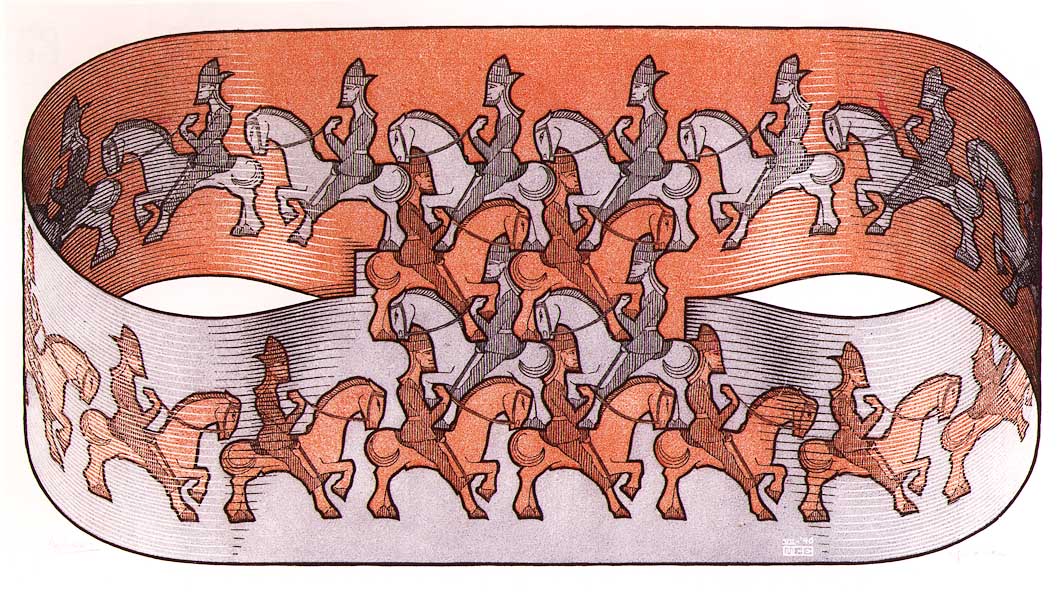
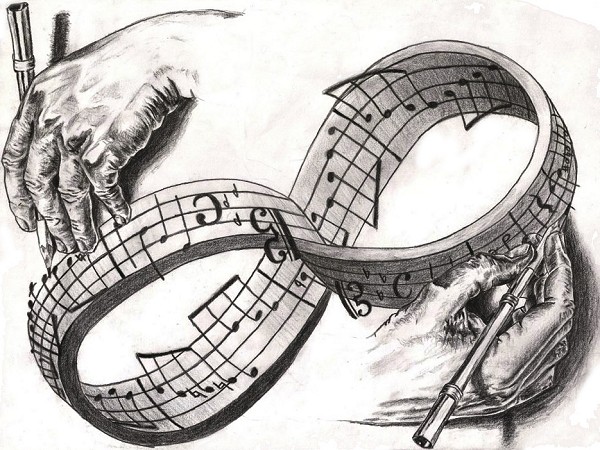
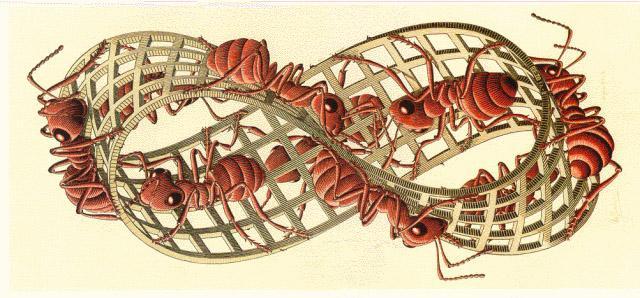
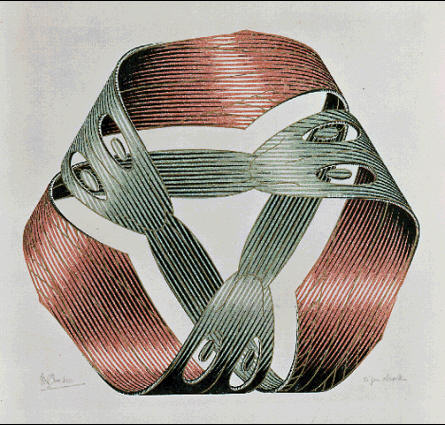

 This project was funded by the
This project was funded by the 

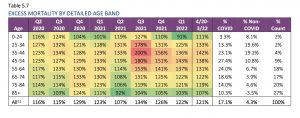
![Möbius animation page-divider-0[1]](https://cognitive-liberty.online/wp-content/uploads/page-divider-01-e1545895146246-300x51.png)



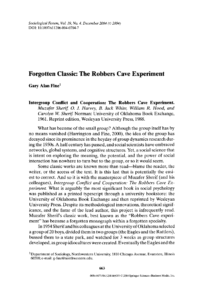
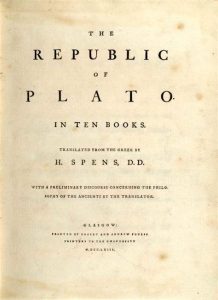
![Johann Wolfgang von Goethe ea30b70a2ef2063ecd0b4401ef444f94eb6ae3d01db316439df2c878_640[1]](https://cognitive-liberty.online/wp-content/uploads/ea30b70a2ef2063ecd0b4401ef444f94eb6ae3d01db316439df2c878_6401-300x200.jpg)